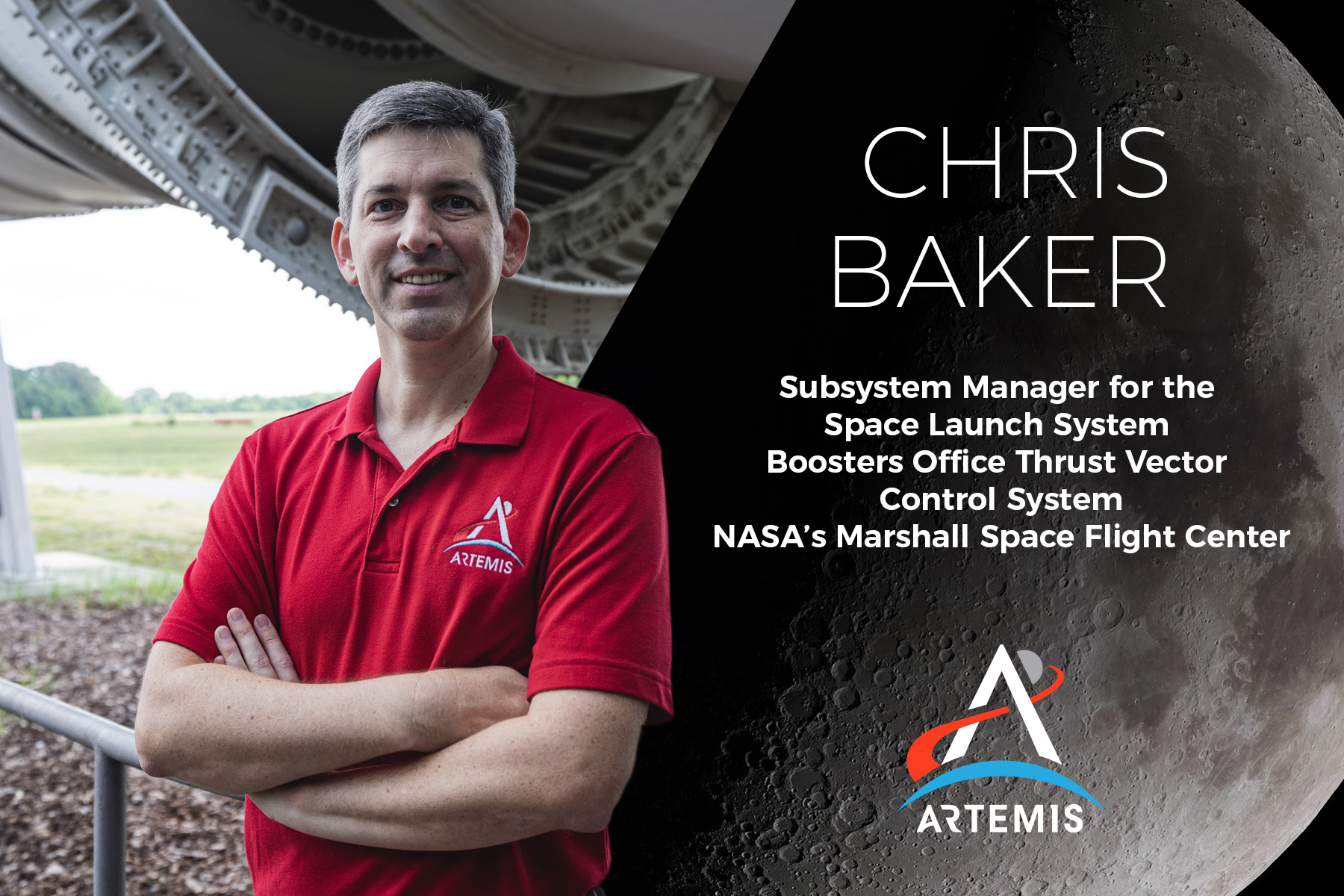Patience and attention to detail are traits that lead to great results, whether you’re solving a problem with a rocket’s propulsion system or waiting on just the right angle of sunlight for a photograph.
Chris Baker knows this well. As the subsystem manager for the Space Launch System (SLS) Boosters Office thrust vector control (TVC) system, Baker leads the TVC efforts for both the heritage hardware boosters and the next-generation boosters. The TVC system steers the nozzle of each booster during the rocket’s first two minutes of flight.
The attention to detail Baker puts into his work for NASA also come into play in his photography, one of his hobbies, which has won several awards.
“The technical parts of both jobs are very similar in the way my thought process works. All the physics classes and all the engineering-type classes I took really helped me understand how a camera ‘thinks,’” Baker said. If my photograph isn’t coming out right, I understand the engineering and the science behind how the camera takes a picture so I can quickly adjust my camera setting or what lens I’m using.”
Baker grew up in Florida, so watching space shuttles launch from Kennedy Space Center was within his field of view but working for NASA wasn’t initially in the picture. As a mechanical engineering student at the Florida Institute of Technology (FIT), he thought he might pursue a career in the automotive industry. But he preferred balmy Florida to Detroit and started his aerospace career in 1997 with United Space Boosters Inc., a division of Pratt & Whitney, the original prime contractor for assembly, checkout, and refurbishment of the non-motor components of the booster during the Space Shuttle Program. He later worked in the boosters structural analysis group and for other contractors, including the Jacobs team at Marshall Space Flight Center in Huntsville, Alabama, before joining NASA in 2019.
Although his education and career were focused on engineering – he has bachelor’s and master’s degrees in mechanical engineering from FIT and a master’s in industrial engineering from the University of Florida – the arts are also part of his background. His mother’s side of the family were artists, and he grew up enjoying drawing and painting.
“I do a lot of homework, and I can teach myself a lot with photography,” he said. “Once you learn a few simple things you can get started.”




























